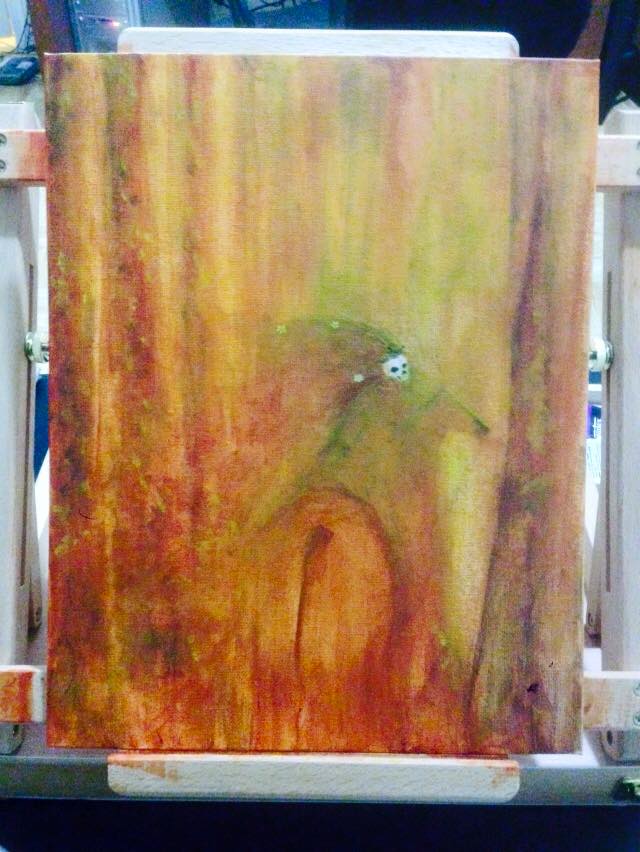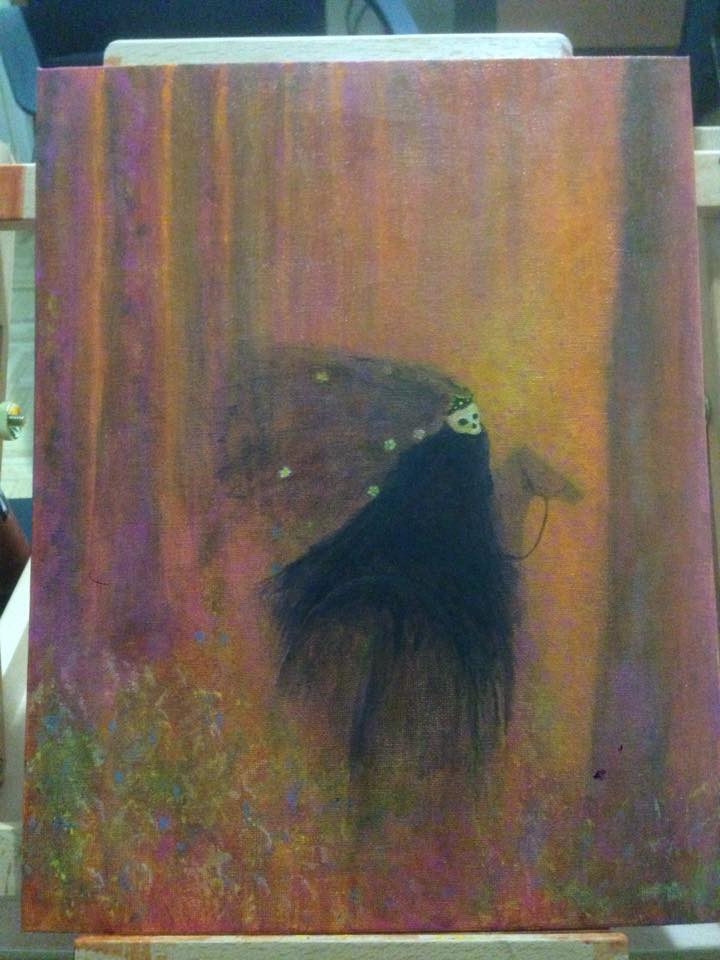Trying out Acrylic
-
I too like your colors and and the textures you are creating. Keep going!!
-
Guilty pleasure lol just love the dark art on my wall
"Her highness on the run" - Acrylic (in progress)
-

-
Amazing! I love the last one, so glad you didn't give up on it!
-
Vry creative, your doing well with it.
-
On the page or in the gallery, your work easily exists in either world...i remember an artist named Mark English..from 20 years ago or so..his work had the same feel to me...really great
-
Thank you guys, this helps me keep working on traditional medium as a side thing. Kevin I check him out and I really enjoy his work especially his landscape paintings!
-
Very nice work! You should check out mark english. He is a true master and I do see a little similarities in the work you posted here!
When painting in acrylic, keep a spray mister close by. It can really help control edges. Although I use an airbrush with just water in there. By working that way you can keep sections wet for a very long time. I really like working on gessoed illustration board much more than canvas. Canvas can call too much attention to it's texture and it's hard to get really nice smooth details with it. One thing that may REALLY help you here. Get your painting done to about 80% without adding any fine details, then finish the last 20% and details on top with oil paint. You get the best of both worlds that way. The speed of acrylic, with the lovely control of oil. Glazes and detail done in oil will wipe right off if you don't like the result!
More tips:
- The true color and depth of acrylic paint will not reveal itself until your final varnish. Use a satin for two coats and gloss for the final coat to avoid making it too shiny.
- The best blending brush for acrylic is your finger! Nothing will blur an edge like simply rubbing your finger on the semi wet paint
- If you work in layers, try an isolation coat. That is simply adding one or two coats of gloss medium (don't use matte) in between layers. If you mess up, you can just wet the area slightly and rub off the new paint
- acrylic may feel dry to the touch, but it may actually take up to a few days to truly cure. Let it cure before doing a final varnish.
- Use the palette with the sponge and pourus papter (i forget the name) to keep your paint wet on the palette for up to a week!
That's all I can think of for now. I'll add more later if I think of anything else! : )
-Lee
-
I first learned to paint in acrylic so that's where I feel most comfortable. Thanks Lee for the tips. I will try those out when I have a chance.
-
@Naroth-Kean I LOVE this!!! I just read Lee's tips below at the bottom and I was told (old school) never to lay oil-based on top of water-based but now I'll have to try it! Let us know how it goes.
-
@Lee-White Thank you so much Lee for the tips! Those tips are totally new to me since I have very little knowledge of traditional mediums and techniques (should have gone to school for fine art or illustration haha). Yes I was struggling and trying to blend with brushes, and the paint dried way too fast. I found it's hard to get detail on canvas I even tried super small brush but the paint just did not through the texture the way it should be. I'm going to try the coating technique later but still not sure about how they work (going to do some research). Again I really appreciate your tips!
@tallison7 Thank you
 I'll let you know how it turns out!
I'll let you know how it turns out! -
Since I started using oils before I ever did much with water based media, I really admire the patience of people who work with paints that dry so fast. Whew. Good job for experimenting with it!
That being said, @tallison7, it sounds really strange to me that anyone would have said to never to put oils over water based media, because I have heard it recommended so often. It may be that you just got it backward, because it would certainly NOT work to put water based paints over oils, ever. However, when you're painting in oils on a gessoed board, you are already putting oils over water-based media. As my teacher worded it, fat goes on lean, but lean can't go on fat.
-
@tallison7, Sarah is correct, you can add oil on top of acrylic, but never the other way around. (actually I shouldn't say never, there is one technique where I do exactly that! but you have to be careful.)